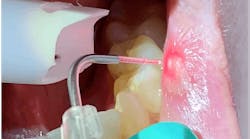Beginning in 2012, Dentistry IQ has periodically offered its readers the chance to explore tips from practice management experts that cover all areas of the dental practice, from patient relationships to the staff to financial concerns to front office matters to marketing strategies.
Whatever your role in the dental practice — whether you're a dentist, hygienist, front office worker, or even a consultant — there's sure to be something in this collection of tips that will help you as you continually commit to your job and practice.
The two previous incarnations of the 100 Tips articles have been big hits on the Dentistry IQ website — the original version still ranks as one of the top-read articles on our website. This fall, the Dentistry IQ editors decided to gather another round of tips. Due to a slight decrease in the number of tips we received this time around, and to increase clickability, we've decided to post each category of tips as a separate article. The separate articles will make it easier for readers to read only the tips that benefit them, although we urge you to read as many as you can!
--------------
Here are the top five communication tips from practice management experts:
Speak less, listen more — to employees, bosses, sales representatives — pretty much everyone you come across. Knowledge means wealth, so you won’t get anywhere unless you listen. As an office manager, listening has helped me learn more about my employees and helped me to find better solutions to performance problems. It has also helped me collect money from patients.
Bridget Fay
Office Manager
We know that people learn in three ways: visual, auditory, and kinesthetic. Engage all these senses! After the all-important pre-clinical interview, continue to keep patients focused during the clinical exam. First, chart existing restorations throughout the dentition, calling out that MODBL that encompasses 75% of the tooth along with the entire lingual cusp. Next, a return trip around the mouth to describe new conditions helps patients “own” their disease. Combine this with digital images where, in consultation with the patient, the hygienists or assistants can point to or circle areas of concern, and you’ve done it!
Mary Lynn Wheaton
Pride Institute
Communicating with patients without judgment is often hard to do. As dental professionals, we get jaded from hearing the same old excuses, and can end up accidentally passing that cynicism on to our patients through improper body language or poor word choices. Dentists, hygienists, assistants, and front office staff need to be observed for proper communication techniques. Proper communication can help patients avoid feeling ashamed or scolded for their historically poor life choices. Pain causes change, and when the patient finally shows up, it’s time to praise the positive — not judge their reasoning.
Lisa L. Knowles, D.D.S.
IntentionalDental Consulting
Manage patient objections to treatment with the help of this acronym: BEAT.
· Use BODY positioning to your advantage. It’s almost impossible to communicate concern and compassion regarding a patient’s genuine objections while he or she is lying on their back looking up at OSHA gear. Sit the patient upright to respond.
· EYE contact should be direct.
· Begin with an AGREEMENT statement to any objection. It aligns you with the patient. Try versions of these statements: “I understand what you are saying, John.” “I hear your concerns, Mary.” “I agree with you, Sam.”
· TONE OF VOICE should communicate confidence and calmness. Pace your response to sound deliberate and not rushed.
Karen Davis, RDH, BSDH
Cutting Edge Concepts
If you find that your patients are “insurance-driven”, examine the language you are using in front of them. When your patient asks “Will my insurance cover that?”, don’t end the conversation with “Let’s go talk to the insurance coordinator to find out.” Instead, say, “With any insurance it is a possibility it may not be covered; however, the cost of not getting treatment will be much higher.” Focus on the patient’s health and, when objections come up, reply with a health-centered answer. Take them back to the consequences of leaving the condition untreated, demonstrating the value in following your recommendations.
Kristin Pelletier
Consultant
To read more tips from practice management experts, click on the following links:
Clinical I Communication I Financial I Front Office I Having a Vision I Greatest Threat to Dentistry
Scheduling I Patient Relationships I The Staff I Practice Management I Leadership I Marketing






